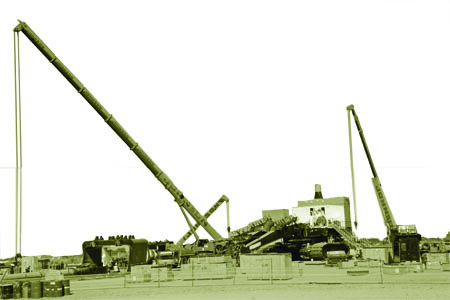In the beginning
28 Nov 2013
When diamond prospecting started in an area called Tuli Block on the fringes of the Kalahari desert in the summer of 1955, there was very little hope that today Botswana would have developed a full and continually expanding diamond pipeline.
During that period, before the country gained independence, three small alluvial diamonds were found along the banks of the dry riverbed of the Motloutse River. De Beers Consolidated Mines (DBCM), under the stewardship of the late geologist Dr. Gavin Lamont, commenced preparations to enter the area and prospect for diamonds.
Over the years perseverance by DBCM and other prospecting companies led to the discovery of approximately 383 kimberlites and with strong convictions that there shall be more than eight operating diamond mines in the country.
“The partnership has been going on for over 40 years now and what we have seen over the last few years especially after the last sales negotiations and the decision to migrate its London-based sales activities to Botswana was an important part to the partnership,” disclosed outgoing De Beers Global Sightholders Sales Vice President Varda Shine in an exclusive interview at her spacious and astutely furnished executive office.
The journey of the country or rather the world’s most sought after gemstone, commenced on July 1, 1971 with the official opening of the Orapa mine by late President Seretse Khama.
Earlier, precisely in 1967, tribal leaders in the country signed an agreement with President Seretse Khama, surrendering all mineral rights in the tribal areas to the Botswana Government so that the prospective wealth of minerals could be shared among all other districts in Botswana.
At the time the country was amongst the poorest in Africa and the discovery of the gemstones completely altered the economic landscape of a country. It was just a year after independence that the famous Orapa pipe was found. Orapa Mine started production in 1972.
Three other Debswana mining operations followed Orapa namely Letlhakane mine in 1975 while Jwaneng mine started operations in 1982 and Damtshaa in 2003. Jwaneng is the world’s richest diamond mine. In addition, Lerala mine was opened in 2008 and B/K 11 and Karowe Mines started operations in 2011. As a result the economy of this, otherwise desert country, relying on the beef industry, transformed incredibly.
Prior to the discovery of diamonds, the revenue of Botswana was less than P10 million, as was observed by the then Minister of Mineral Resources and Water Affairs, Mr Archibald Mogwe.
“The diamond mines were Godsent and rapidly transformed the economy, increasing revenue of the country from less than P10million a year at independence to over a billion today,” Mogwe had said back in 1990.
Today Botswana is the world’s largest producer of diamonds by value and there are currently eight operating mines with the latest being the highly technical underground Ghaghoo diamond mine which commenced production in the last quarter of 2013.
The period between 2006 and 2011 was seen as the diamond valuation and trading consolidation period. It saw the establishment of the Diamond Trading Company Botswana (DTCB) which replaced the former Botswana Diamond Valuing Company (BDVC).
It was also the period of the selection of Botswana’s first diamond sightholders who were 16 in number and have since blossomed to 21 alongside the construction of the DTCB headquarters in 2008 which remains the largest rough diamond sorting and valuation facility in the world.
And now De Beers has moved its sales wing to Gaborone in a move expected to catapult the economy of Botswana as over a 100 rough diamond buyers will, at least 10 times a year, converge here to buy their preferred gem through transactions totaling at least P44 billion a year. ENDS
Source : BOPA
Author : Baleseng Batlotleng
Location : GABORONE
Event : Business feature
Date : 28 Nov 2013






